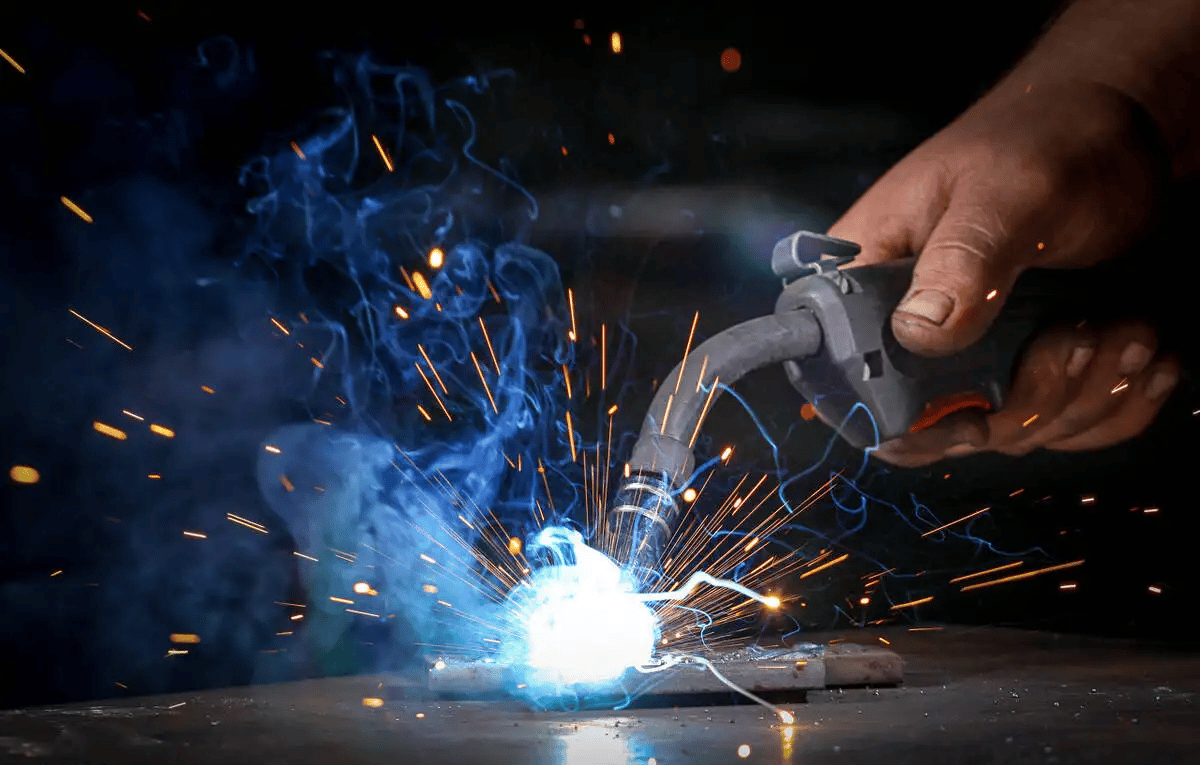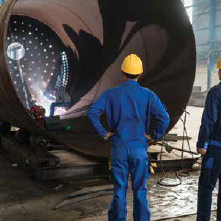Top Advantages of Selecting Welding Inspection Racine for Quality Assurance
Top Advantages of Selecting Welding Inspection Racine for Quality Assurance
Blog Article
Innovative Methods to Fillet Weld Examination and Testing: Enhancing Weld Quality and Compliance Standards
In the realm of welding, the top quality and honesty of fillet welds play a critical function in ensuring the structural stability and dependability of numerous commercial parts. With the consistent drive for improved performance and conformity with strict criteria, the exploration of ingenious techniques to fillet weld evaluation and testing has actually become critical. As sectors progress, the typical techniques may no more be adequate in satisfying the demands of modern-day welding applications. By welcoming cutting-edge technologies and methodologies, a new horizon of possibilities arises in the realm of weld top quality analysis and adherence to compliance criteria.
Advanced Non-Destructive Testing Methods
Utilizing cutting edge technologies, progressed non-destructive screening techniques play a crucial role in ensuring the integrity and top quality of fillet welds. These methods, such as phased selection ultrasonic testing (PAUT) and magnetic fragment testing (MPT), offer comprehensive understandings into the weld's interior framework without triggering any type of damages to the material. PAUT, for example, uses multiple ultrasonic aspects to evaluate the weld from different angles, providing a detailed visualization of potential problems like lack of combination or fractures.
In A Similar Way, MPT is reliable in discovering surface-breaking flaws by applying an electromagnetic field and iron fragments to the weld location. This approach is especially useful for identifying interruptions that might endanger the weld's stamina. By utilizing these sophisticated non-destructive screening methods, weld examiners can accurately assess the quality of fillet welds, making sure compliance with sector criteria and regulations. The capacity to detect problems at an early stage not just boosts weld top quality yet likewise avoids expensive rework or failings in architectural honesty, highlighting the importance of these ingenious screening techniques in welding inspections.
Robotics and Automation in Inspection
The assimilation of robotics and automation has revolutionized the examination procedure for fillet welds, boosting performance and precision in top quality assessment. Robotics supply exact control and repeatability in inspecting welds, ensuring constant and dependable outcomes. Automated systems can be configured to follow specific evaluation courses, guaranteeing complete coverage of welds and lowering the risk of human error.
Robot examination systems furnished with advanced sensors can identify and measure weld attributes with high accuracy, offering thorough information for analysis. These systems can identify problems such as cracks, absence of fusion, and porosity, allowing punctual corrective activities to be taken. Additionally, robotics and automation enable real-time information collection and analysis, providing instant feedback to operators and facilitating fast decision-making procedures.
Furthermore, making use of robotics and automation in fillet weld assessment boosts overall productivity by decreasing examination times and increasing assessment throughput. By simplifying the inspection process, producers can make sure weld high quality and conformity criteria are fulfilled successfully, inevitably leading to set you back financial savings and boosted item quality.
Utilizing Artificial Intelligence for Analysis
Expert system plays a critical role in enhancing the efficiency and accuracy of evaluation in fillet weld examination procedures. By harnessing the power of AI, inspectors can simplify the evaluation of weld high quality and compliance requirements, resulting in more reliable and specific outcomes. AI algorithms can quickly process large amounts of data from weld evaluations, spotting flaws or disparities that might be testing to determine with the naked her explanation eye. This sophisticated innovation enables real-time surveillance of weld high quality, enabling prompt restorative actions to be taken if any kind of issues are spotted.
Moreover, AI systems can pick up from previous assessment data, consistently improving their capacity to identify possible problems and inconsistencies in fillet welds. This adaptive learning capability improves the total quality assurance process, decreasing the probability of human mistake and ensuring that welds meet the required requirements. By incorporating fabricated knowledge right into fillet weld evaluation, industries can accomplish higher levels of effectiveness, consistency, and conformity in their inspection practices.
Portable Equipment for On-Site Inspection
 Enhancing field inspection performance, the adoption of mobile tools transforms on-site assessment processes for fillet welds. These tools use versatility and convenience, permitting examiners to conduct complete evaluations in numerous areas, consisting of challenging or remote settings. Mobile my company tools such as ultrasonic testing devices, magnetic fragment evaluation equipment, and digital radiography systems supply real-time information and high-resolution imaging abilities, allowing quick decision-making and immediate feedback on weld quality.
Enhancing field inspection performance, the adoption of mobile tools transforms on-site assessment processes for fillet welds. These tools use versatility and convenience, permitting examiners to conduct complete evaluations in numerous areas, consisting of challenging or remote settings. Mobile my company tools such as ultrasonic testing devices, magnetic fragment evaluation equipment, and digital radiography systems supply real-time information and high-resolution imaging abilities, allowing quick decision-making and immediate feedback on weld quality.One substantial benefit of mobile tools is their capability to improve inspection procedures, lowering downtime and boosting general efficiency. Inspectors can easily transfer these tools to various task sites, eliminating the demand for moving hefty machinery or elements to off-site centers. In addition, the mobility of these tools advertises cost-effectiveness by lessening transportation costs and speeding up assessment timelines.
In addition, making use of mobile devices for on-site evaluation promotes proactive quality assurance measures, as assessors can immediately identify and attend to any type of prospective welding problems or inconsistencies. By integrating these innovative innovations into on-site assessment practices, welding specialists can guarantee conformity with market standards and improve weld quality, eventually leading to enhanced architectural stability and safety in different welding applications.
Assimilation of Data Administration Equipment
Having enhanced on-site inspection processes with the application of portable devices, the next stage involves the smooth assimilation of information management systems to better boost efficiency and data evaluation abilities in fillet weld inspection and screening. Welding Inspection Racine. By integrating information monitoring click site systems into the examination process, organizations can enhance information collection, storage space, and evaluation. This integration allows for real-time monitoring of weld high quality, immediate identification of issues, and prompt decision-making to remedy any concerns that might arise throughout the assessment procedure
The integration of data management systems enables smooth communication between different stakeholders entailed in the evaluation process, promoting collaboration and boosting total top quality control steps. Inevitably, the combination of information management systems serves to boost the criteria of fillet weld inspection and screening, guaranteeing conformity with industry guidelines and boosting weld top quality.
Final Thought
To conclude, innovative techniques to fillet weld examination and screening have considerably improved weld top quality and conformity criteria. Advanced non-destructive testing approaches, robotics, automation, fabricated knowledge, mobile devices, and data administration systems have actually transformed the means weld assessments are carried out. By making use of these modern technologies, industries can ensure that welds satisfy the called for quality requirements and regulations, eventually improving overall performance and safety in welding procedures.

By using these advanced non-destructive screening techniques, weld examiners can precisely assess the quality of fillet welds, making certain conformity with market criteria and laws. Mobile tools such as ultrasonic testing tools, magnetic bit evaluation devices, and digital radiography systems give real-time information and high-resolution imaging capacities, enabling fast decision-making and prompt feedback on weld top quality.
Having enhanced on-site examination procedures through the use of portable devices, the next phase entails the seamless integration of data management systems to better improve performance and data evaluation capacities in fillet weld examination and screening (Welding Inspection Racine). Inevitably, the combination of data administration systems serves to boost the criteria of fillet weld examination and testing, making certain compliance with sector policies and enhancing weld top quality
 In verdict, cutting-edge methods to fillet weld examination and testing have considerably enhanced weld quality and conformity criteria.
In verdict, cutting-edge methods to fillet weld examination and testing have considerably enhanced weld quality and conformity criteria.Report this page